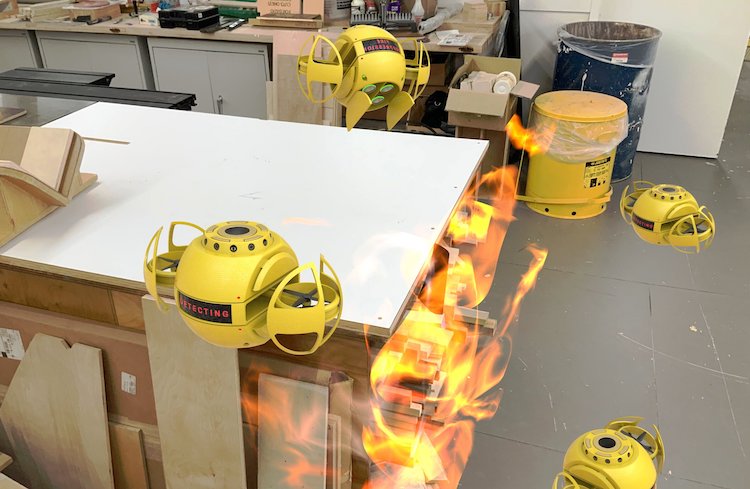
© Thomaschy.com
When a fire happens, every second counts. Evacuating people and establishing a plan of action needs to be done as fast as possible to save lives and minimize damage. That is why fire departments have a record for responding to emergencies quicker than most police departments. In the United States, the average fire department response time is 8-10 minutes while the average police response time is 15-20 minutes. Even before firefighters arrive on the scene they begin to plan a course of action. To do this they need as much information about the number of people to be accounted for, the layout of the building, and the exact location of the fire to be treated.
With the advancement of drone technology firefighters have a tool that can quickly give them that information. Drones specifically designed to withstand high temperatures can be sent into burning buildings to assess the situation without putting firefighter lives at risk. The high definition infrared cameras on drones can show firefighters where victims may be trapped, what parts of a building are no longer structurally safe, and where the fire is emanating from. The drones provide all this information in a matter of minutes so that firefighters can safely get to work. Some drones can even be tethered to hoses to help put out fires. But what if a drone could already be onsite to provide this critical information before firefighters even leave the firehouse?
This was the inspiration behind a product designed by Haoyang Chen, an Industrial Design student from the Pratt Institute in New York. Chen designed a drone that would essentially replace a building’s smoke alarms as a comprehensive fire response system. “The embodiment,” Chen explains, “is the Pagurian drone which provides instant information to fire departments about the fire and potential victims.” Pagurian describes attributes pertaining to a hermit crab, and that is a bit what this drone resembles. It is shaped like an orb with a flat side that magnetically attaches to a wireless ceiling mounted docking station. When in the docking station, it looks like a hermit crab hanging upside down. And just like how a hermit crab carries it’s “house” around with it, providing the crab with what it needs to survive, Chen’s drone has everything it needs in a fire emergency.
In the event of a fire, the drone automatically deploys to execute four functions before firefighters arrive. As Chen explains, these functions are “detecting the fire situation, reporting the fire situation and presence of humans in danger, directing the evacuation process, and extinguishing the fire.” Before installation, the drone uses its cameras to create a detailed floor plan of the building. If more than one drone is to be installed, each is programmed and coordinated with each other. On the bottom of the drone is a fire extinguisher that will automatically spray the appropriate chemicals based on the type of fire. Circling around the camera is 6 thermal infrared and 6 FPV (First Person View) cameras, along with 4 zoom lens cameras on the bottom.
When being deployed, the drone is propelled by 2 tiltrotors inspired by the design of the Bell Boeing V-22 Osprey. With it’s fireproof, hermit crap inspired shell, the drone safely flies through a building to identify the source of the fire, attempts to extinguish the fire and lead people to safety. The drone takes in critical live information and compares it to the stored floor plan to guide people along the safest escape route. An LED screen on the drone flashes an “Exit This Way” message to victims as it guides them out of harm’s way. When at a safe distance, the LED screen changes the message to “We’re Safe”. All of this information is live streamed to firefighters so that when they arrive at the fire they have accurate information that can give them the best outcome for a successful mission.
Statistics show that buildings like schools, factories, and offices, are growing more and more crowded. In the event of fire emergencies, these crowds make it harder for firefighters to evacuate buildings and execute their jobs. Chen invisions a network of his drones that can be automatically deployed to get people to safety, begin extinguishing fires, and assist firefighters. His design was recently shortlisted for consideration out of more than 2,000 entries for the 2020 Lexus Design Award. Though he did not make it as a finalist, he used the critiques he received to make some modifications to the drone. A few months later Chen entered his Auto-Deployable Fire Response Drone into the annual European Product Design competition. Judges were so impressed with Chen’s drone that it won first place in the competition’s categories for Design for Society, and Industrial and Life Science Design/Safety Designs. Right now Chen is working on transforming his design into a working prototype, a drone that will be installed throughout structures that can save lives in the event of a fire.
|